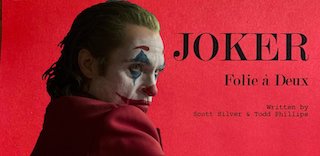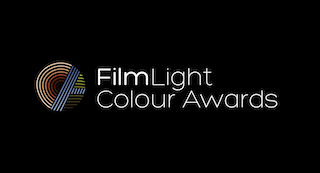 Lawrence Sher, ASC, is an American cinematographer and film director best known for his work on Joker (2019), Godzilla: King of the Monsters (2019), War Dogs (2016), The Hangover (2009) and Garden State (2004). He has just completed filming Joker: Folie a deux – the follow up to the 2019 film which comes out in 2024. Last month he was appointed as the president of the 2023 FilmLight Color Awards jury. The winners of the award will be announced in November at EnergaCamerImage. Sher recently spoke with Digital Cinema Report via email about cinematography, about the role of color in the filmmaking process and about the color awards themselves. Here is that conversation.
Lawrence Sher, ASC, is an American cinematographer and film director best known for his work on Joker (2019), Godzilla: King of the Monsters (2019), War Dogs (2016), The Hangover (2009) and Garden State (2004). He has just completed filming Joker: Folie a deux – the follow up to the 2019 film which comes out in 2024. Last month he was appointed as the president of the 2023 FilmLight Color Awards jury. The winners of the award will be announced in November at EnergaCamerImage. Sher recently spoke with Digital Cinema Report via email about cinematography, about the role of color in the filmmaking process and about the color awards themselves. Here is that conversation.
Digital Cinema Report: What can you tell us about your role as president of the 2023 FilmLight Color Awards?
Lawrence Sher: I’m very proud to be the president of this year’s awards. I know it will be an immense challenge to help filter all the other jurors’ opinions into consensus winners. Color is complex and subjective so my main goal is to allow an open forum in which we can express unfiltered thoughts on the work of the artists.
Coloring and colorists are as fundamental to modern filmmaking as any lighting or camera tool. As someone who started their career color timing movies the old-fashioned way, I was an early adopter and champion of the digital intermediate as I could see its potential.
 I believe the color tools we have today are perhaps (along with the digital sensor) the most transformative change in filmmaking in the last 50 years. My relationship and collaboration with my colorist is as important as any relationship I have with my camera, grip and lighting teams. I am very excited to see the great work from this year’s submissions and shine a spotlight on their creative inputs to their projects.”
I believe the color tools we have today are perhaps (along with the digital sensor) the most transformative change in filmmaking in the last 50 years. My relationship and collaboration with my colorist is as important as any relationship I have with my camera, grip and lighting teams. I am very excited to see the great work from this year’s submissions and shine a spotlight on their creative inputs to their projects.”
DCR: What will you be looking for in entries this year?
LS: First and foremost, I will be looking for entries that show point of view and skillful execution of an idea. As with all film-making endeavors, the art needs to work seamlessly with the piece. If we notice the color above the film, then it’s probably not going to make the cut.
DCR: Can you tell us about your relationship with color and if/how this has changed over the years?
LS: As a film maker and cinematographer, I’ve always loved using color as an equal tool in the palette alongside lighting, composition, and movement. The films of Storaro and Menges and many others served as templates for me to see color as an expression of emotion in the film. Early in my career, I started to assign emotions to what uncorrected fluorescents or bold red light made me feel when watching films and translating those into my later work. I still start with lights, filters and gels, but the transformative power of the digital intermediate and LED lighting has expanded the ability to use color even more precisely and creatively and in a more efficient and cost-effective way.
DCR: Describe the working relationship between colorist and cinematographer and how this has evolved across your work?
LS: Although the colorist has always been a critical part of the film-making process, their role has expanded in the last 20 years. For me, what started with notes about three printer lights to a Hazeltine dailies colorist, and early morning trips to the lab to watch workprints, has evolved into building bespoke LUTs during testing at the start of a project to help shape the look of the images on digital sensors, and hours precisely enhancing the image in digital intermediate suites. My colorist is part of the earliest prep and is there until the final deliverable frame gets shipped off to the screen.
 DCR: How do you think color shapes the way an audience perceives TV/film?
DCR: How do you think color shapes the way an audience perceives TV/film?
LS: I think color shapes the way an audience perceives TV/film in the same way all aspects of the visual language of film-making do – both subconsciously and consciously. The conscious ways are in the ways it allows the movie magic to be executed, like turning day into night. And while the skillful hand of the cinematographer and colorist can transform a scene and deliver the mood of the scene, it’s the subconscious aspects that I find so critical.
Starting with simple color matching to make the cuts between shots seamless is an aspect that most viewers never even notice, but their experience would suffer immensely without it. Shaping color to further draw the eye of the viewer towards important places in the frame is also key, as well as adding warmth to convey emotions like heat or comfort. As a cinematographer and filmmaker, we are constantly using visual languages to express emotion for the audience and color is a critical component of this expression.
The FilmLight Color Awards https://www.filmlightcolorawards.com
